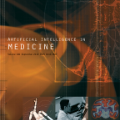Recent advances in computational perception have significantly improved the ability of autonomous robots to perform state estimation with low entropy. Such advances motivate a reconsideration of robot decision-making under uncertainty. Current approaches to solving sequential decision-making problems model states as inhabiting the extremes of the perceptual entropy spectrum. As such, these methods are either incapable of overcoming perceptual errors or asymptotically inefficient in solving problems with low perceptual entropy. With low entropy perception in mind, we aim to explore a happier medium that balances computational efficiency with the forms of uncertainty we now observe from modern robot perception. We propose an approach for efficient task planning for goal-directed robot reasoning. Our approach combines belief space representation with the fast, goal-directed features of classical planning to efficiently plan for low entropy goal-directed reasoning tasks. We compare our approach with current classical planning and belief space planning approaches by solving low entropy goal-directed grocery packing tasks in simulation. Our approach outperforms these approaches in planning time, execution time, and task success rate in our simulation experiments. We also demonstrate our approach on a real world grocery packing task with physical robot.
翻译:在计算概念方面最近取得的进展大大提高了自主机器人进行国家估计和低摄氏度观测的能力。这种进展促使在不确定的情况下重新考虑机器人决策。目前解决连续决策问题的方法表明,它们位于感知的摄氏谱的极端。因此,这些方法要么无法克服感知错误,要么在解决低感知的催化素问题方面暂时无效。在考虑低感知时,我们的目标是探索一种更幸福的介质,将计算效率与我们目前从现代机器人的认知中观察到的不确定形式相平衡。我们提出了一种高效的任务规划方法,用于目标导向的机器人推理。我们的方法将信仰空间代表与传统规划的快速、目标导向特征结合起来,以便有效地规划低感知性目标导向的推理任务。我们将我们的方法与目前的典型规划和信仰空间规划方法进行比较,在模拟中解决低感知性目标导向的杂货包装任务。我们的方法在规划时间、执行时间和模拟实验中的任务成功率方面超越了这些方法。我们还展示了我们关于实际世界包装任务的方法。




